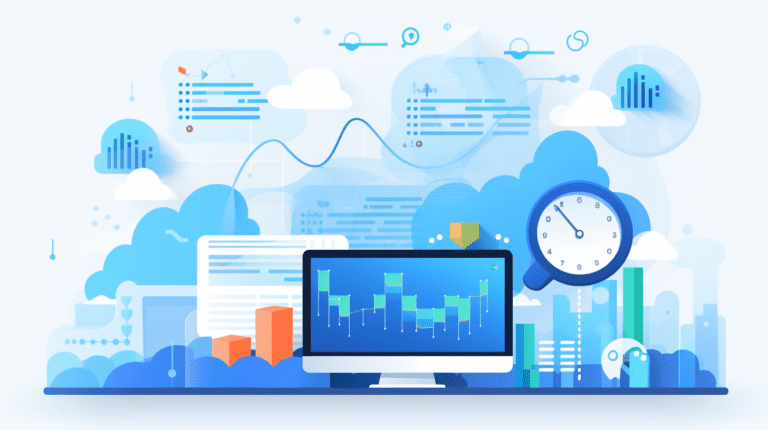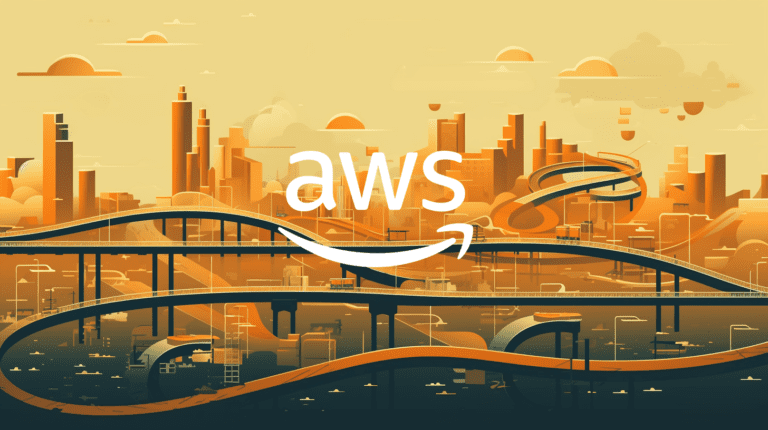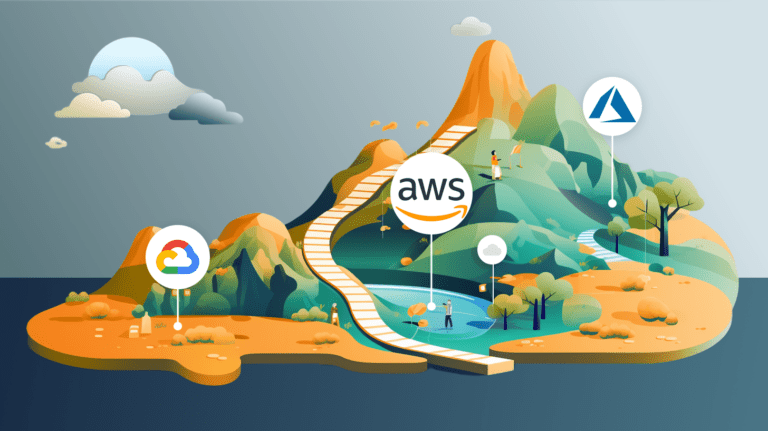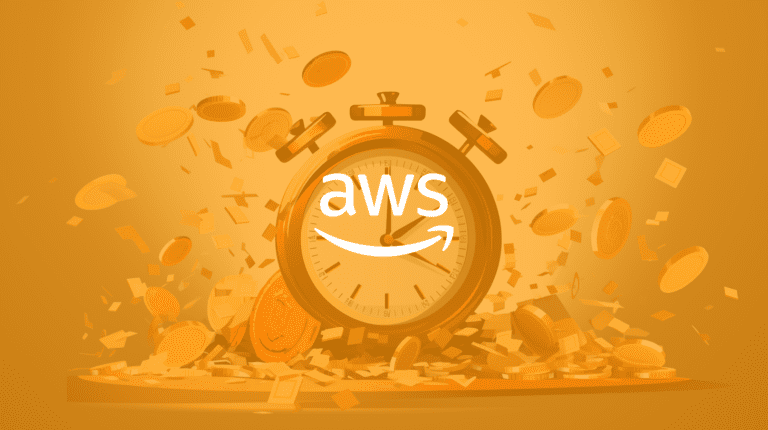The Ultimate Guide to Cloud Cost Management
Navigating the maze of cloud cost management can be a daunting task. As organizations increasingly rely on cloud infrastructure for their operations, it’s crucial to have a cloud cost management strategy. This guide breaks down the essentials of managing and optimizing your cloud costs.
What is Cloud Cost Management?
Cloud cost management controls and optimizes the costs associated with cloud computing resources. It involves various strategies and tools designed to provide complete visibility into cloud spend. This enables better cost allocation, cost savings, and budgeting.
Why is Cloud Cost Management Essential?
The cloud offers unprecedented flexibility, but you can incur unnecessary expenses and waste resources without proper management. Cloud cost management provides the oversight needed to use cloud resources efficiently, thus minimizing costs and maximizing the business value of your cloud investments.
How to do Cost Optimization in the Cloud?
Cost optimization in the cloud involves a set of practices designed to help organizations minimize cloud spending while maximizing the value of cloud usage.
Steps for Cost Optimization
- Delete Unused Resources: Tools like AWS Trusted Advisor, Azure Advisor, and Google Cloud Recommender can help identify unused instances, storage disks, and IP addresses, thus reducing cloud waste.
- Rightsize resources: Rightsizing is optimizing cloud resources to ensure that resources are neither over-provisioned nor under-provisioned, leading to cost savings and improved performance. The same tools mentioned above offer rightsizing recommendations, too.
- Utilize Reserved Instances and Savings Plans: Cloud providers offer volume discounts for reserving instances and other resources that can be used to achieve significant savings. Cloud cost management tools also help identify these cloud spend reduction opportunities.
- Use cloud best practices: Each cloud provider has best practices that should be followed when deploying cloud infrastructure, as they often help you reduce cloud spend. Examples of these best practices include using the latest generation instance types and storage types, setting retention policies for storage buckets and cloud logs, and utilizing existing software licenses vs. purchasing new ones.
- Use automated scheduling: Certain cloud services support start/stop operations. This feature can be used to reduce cloud waste by only running the required services during business hours. For example, you might be able to stop development and staging environments during nights and weekends, thus reducing your cloud spend.
- Automate Cost Monitoring: Real-time cost monitoring against a cloud budget enables immediate response to cost anomalies and overruns.
- Ensure future compliance: By implementing tools such as Infracost, you ensure that your FinOps and Cloud Cost Management are automated directly in engineering workflows. This ensures that cloud best practices are followed automatically, cloud cost budget breaches are caught before money is spent, and all resources are tagged correctly.
Different Cloud Costing Model Strategies
To better action cloud cost management strategies, it is helpful to understand the formula of cloud costs. That formula is Cloud Costs = Usage x Unit Price
Looking at the Unit Price part of this formula, it’s helpful to understand the different pricing mechanisms of cloud providers. Three of the most common ways resources are charged for are:
- Pay-as-You-Go: This is the most flexible model, where you pay for cloud resources as you use them.
- Reserved Instances and Savings Plans: This involves pre-purchasing cloud resources at a discounted rate, often requiring a long-term commitment.
- Spot Instances: Suitable for workloads with flexible start and end times, Spot Instances allow you to use spare capacity at a fraction of the regular price.
Is Cloud Cost Management the Same as Cloud Cost Optimization?


These terms are often used interchangeably, but they are different. Cloud cost management is a broader term that encompasses tracking, analyzing, and controlling cloud costs. Cloud cost optimization is a subset focused exclusively on reducing and controlling those costs. This could be achieved by optimizing cloud spend (by changing cloud infrastructure) or the rate paid for those resources.
What is a Cost Management Tool?
Cloud cost management tools provide analytics on your bills, insights, and recommendations to manage cloud costs effectively. The features range widely, but generally, they can detect cost anomalies, help allocate costs to your cost center, provide the basis to calculate your unit cost, and view your cloud resource costs.
Examples include tools from cloud providers such as AWS Cost Explorer, Google Cloud’s cost management tools, Azure Cost Management. and third-party solutions. These tools offer insights into cloud costs and your billing data and facilitate cost allocation, providing a complete cloud cost management solution.
A newer category of tools has started to emerge, which is trying to shift cloud costs left (meaning earlier in the engineering workflow rather than later). One of these tools is Infracost, which shows engineers how their code changes will impact cloud costs. It also checks the code to ensure the right tags are applied, and best practices are being followed before the code is shipped.
Why Is Cloud Cost Management So Difficult?
Complexity of Cloud Services
The cloud offers various services, each with its pricing structure, making it challenging to keep track of expenses.
Lack of Visibility
Organizations often need more cost visibility into their cloud usage, making it difficult to allocate costs accurately. To enable deeper visibility, companies need to tag their cloud resources with the categories that give them the required visibility, such as who owns a resource (or cost center), what application it belongs to, and what environment it is in (e.g., production, staging, development). Tagging is hard to do well at scale on multi-cloud environments as it requires someone to review all cloud resources and add the necessary metadata for the resources. Furthermore, resources are regularly being changed, which might require updating the metadata.
Rapidly Changing Environment
Cloud environments evolve quickly, making predicting future costs and associated risks hard.
How to Monitor Cloud Spending?
Monitoring cloud spending involves continuously tracking and comparing expenses against your budget.
Tools for Monitoring Cloud Spend
- AWS Cost Explorer
- Google Cloud Platform’s Cost Tools
- Azure Cost Management
How to Manage Cloud Costs?
Managing cloud costs involves proactive planning and ongoing scrutiny. This involves setting up a cloud budget, regularly reviewing bills, and analyzing billing data to identify cost-saving opportunities.
The Benefits of Cloud Cost Management
- Cost Transparency: Full visibility into your cloud spending.
- Waste Reduction: Identify and eliminate idle resources.
- Maximize Savings: Optimizing purchasing decisions and using cloud resource costs to your advantage.
- Efficient Usage: Allocate resources where they generate the most value based on usage data and business metrics.
Improve Visibility, Allocation, and Efficiency of Cloud Spend at Scale
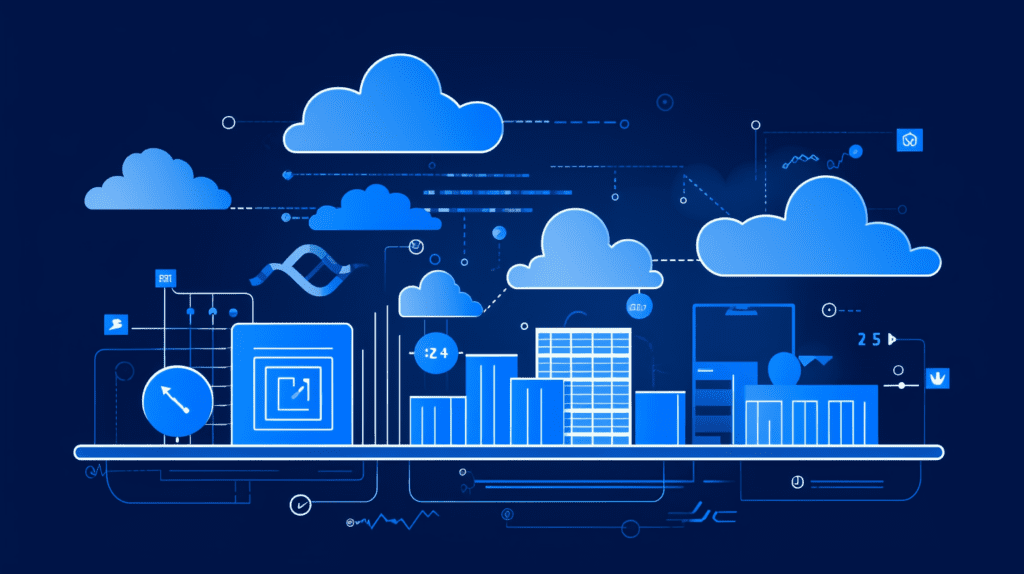

A well-implemented cloud cost management strategy offers benefits beyond mere cost savings. By focusing on cost and customer utilization, businesses can allocate resources more efficiently, achieving significant savings in the long run.
Complete Cost Visibility
Complete visibility into your cloud costs enables you to identify areas for potential savings, optimize costs, and improve the efficiency of cloud spending at an enterprise scale.
Who Uses Cloud Cost Management Software?
Cloud cost management software is essential for anyone overseeing cloud resources, including DevOps Engineers, Platform Teams, FinOps teams, IT managers, financial analysts, and C-level executives.
AWS Cost Explorer + Billing
AWS has powerful cloud cost management tools, including Cost Explorer, that enable users to gain insights into their cloud spend and set up cost data exports. It allows organizations to analyze and visualize their cloud usage and spending, helping them understand where their cloud expenses are incurred and identify potential cost savings opportunities. With customizable cost reports, forecasting tools, and the ability to track spending across different cloud accounts, Cost Explorer empowers businesses to optimize their cloud resources and effectively manage their AWS billing, ensuring cost efficiency and budget control in the cloud.
Azure Cost Management + Billing
Azure Cost Management and Billing provide tools for monitoring, allocating, and optimizing Azure cloud spend. They offer features like cost analysis, exporting data, and setting up budget alerts to detect cost overruns. The billing features let you manage your accounts, invoices, and payments. These features are similar to the AWS tools as they provide users with cost visibility across Azure subscriptions and help with waste reduction efforts. The Azure Advisor feature provides cost insights and recommendations that help optimize costs.
Google Cloud Cost Management + Billing
Google offers Google Cloud Cost Management tools to help organizations effectively control, analyze, and optimize their cloud spend. This comprehensive solution enables users to gain insights into their GCP usage and costs through the Google Cloud Console, create customized cost reports, set budget alerts, and forecast future expenses. Additionally, it offers tools like Cost Explorer and Cost Anomaly Detection, which help identify cost savings opportunities and detect unusual spending patterns across cloud accounts (projects). These tools empower businesses to manage their cloud budgets efficiently, optimize resource allocation, and make informed decisions to ensure cost-effectiveness while leveraging Google’s cloud services.
Frequently Asked Questions (FAQs)
What is Cloud Cost Management?
Cloud cost management controls and optimizes the costs associated with cloud computing resources. This involves strategies and tools to provide visibility into cloud spend, enabling better budgeting and cost allocation.
Is Cloud Cost Management the Same as Cloud Cost Optimization?
No, they are not the same. Cloud cost management is a broader term that encompasses tracking, analyzing, and controlling cloud costs. Cloud cost optimization is a subset that focuses specifically on reducing and handling costs.
How Do Cost Management Tools Help?
Cloud cost management tools offer analytics, insights, and recommendations for managing your cloud costs effectively. These tools facilitate cost allocation and provide complete visibility into your cloud spending.
What Are the Different Cloud Costing Model Strategies?
Three popular cloud costing models are Pay-as-You-Go, Reserved Instances, Savings Plans, and Spot Instances. Pay-as-you-go is the most flexible but could be more expensive. Reserved Instances and Savings Plans offer volume discounts but require long-term (1 or 3-year) commitments. Spot Instances are suitable for elastic workloads and are usually cheaper; they often require applications to handle the instances being stopped at short notice.
Why is Managing Cloud Costs Difficult?
The complexity of cloud services, rapidly changing environments, and a lack of visibility into cloud usage make cloud cost management challenging.
What Steps Can I Take for Cost Optimization in the Cloud?
Deleting unused or idle resources, rightsizing resources, utilizing Reserved Instances and Savings Plans, and automating cost monitoring are practical steps for optimizing cloud costs.
How Can I Monitor My Cloud Spending?
Tools like AWS Cost Explorer, Google Cloud’s cost management tools, and Azure Cost Management offer features for monitoring your cloud spending, from cost analysis to exporting cost management data.
Who Usually Uses Cloud Cost Management Software?
DevOps Engineers, FinOps practitioners, IT managers, financial analysts, and C-level executives commonly use cloud cost management software to get a handle on their organization’s cloud expenses.
What Benefits Can I Expect from Cloud Cost Management?
Benefits include cost transparency, waste reduction, maximizing savings, and efficient resource allocation based on data and business metrics.
What is AWS Cost Explorer + Billing?
Cost Explorer is a cloud cost management tool offered by Amazon Web Services. It allows users to analyze and visualize their AWS spending, helping them understand, track, and optimize their cloud costs.
What is Azure Cost Management + Billing?
Azure Cost Management and Billing is a suite of tools designed for monitoring, allocating, and optimizing Azure cloud costs. It offers features like cost analysis and alerts for cost overruns.
What is Google Cost Management + Billing?
Google Cloud Cost Management is a suite of tools and services within Google Cloud Platform designed to help organizations control, analyze, and optimize their cloud spend, providing insights, budgeting capabilities, and cost-saving opportunities for efficient resource management.



